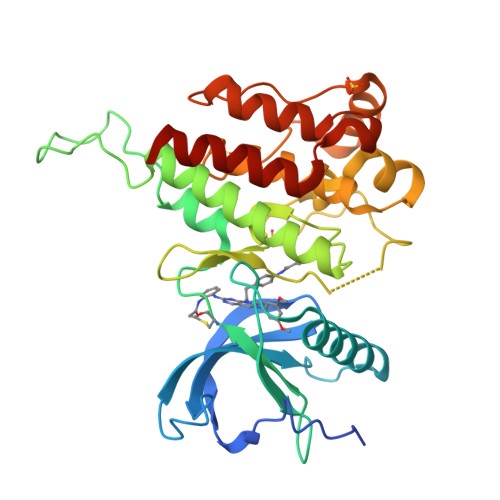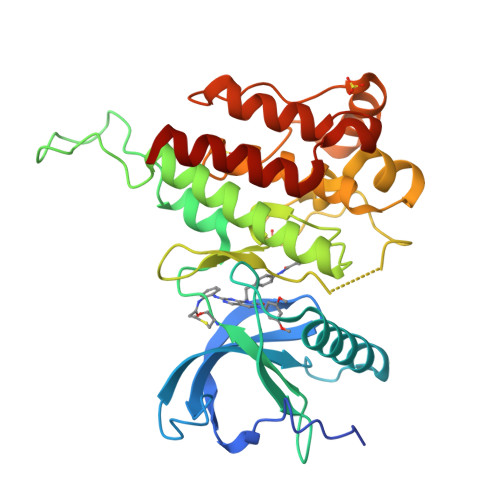Design, synthesis, and biological evaluation of selective covalent inhibitors of FGFR4.
Chen, X., Li, H., Lin, Q., Dai, S., Qu, L., Guo, M., Zhang, L., Liao, J., Wei, H., Xu, G., Jiang, L., Chen, Y.(2024) Eur J Med Chem 268: 116281-116281
- PubMed: 38432058
- DOI: https://doi.org/10.1016/j.ejmech.2024.116281
- Primary Citation of Related Structures:
8XLO, 8XLQ - PubMed Abstract:
Aberrant signaling via fibroblast growth factor 19 (FGF19)/fibroblast growth factor receptor 4 (FGFR4) has been identified as a driver of tumorigenesis and the development of many solid tumors, making FGFR4 is a promising target for anticancer therapy. Herein, we designed and synthesized a series of bis-acrylamide covalent FGFR4 inhibitors and evaluated their inhibitory activity against FGFRs, FGFR4 mutants, and their antitumor activity. CXF-007, verified by mass spectrometry and crystal structures to form covalent bonds with Cys552 of FGFR4 and Cys488 of FGFR1, exhibited stronger selectivity and potent inhibitory activity for FGFR4 and FGFR4 cysteine mutants. Moreover, CXF-007 exhibited significant antitumor activity in hepatocellular carcinoma cell lines and breast cancer cell lines through sustained inhibition of the FGFR4 signaling pathway. In summary, our study highlights a novel covalent FGFR4 inhibitor, CXF-007, which has the potential to overcome drug-induced FGFR4 mutations and might provide a new strategy for future anticancer drug discovery.
Organizational Affiliation:
Department of Oncology, NHC Key Laboratory of Cancer Proteomics, State Local Joint Engineering Laboratory for Anticancer Drugs, Xiangya Hospital, Central South University, Changsha, Hunan 410008, China; National Clinical Research Center for Geriatric Disorders, Xiangya Hospital, Central South University, Changsha, Hunan 410008, China.




















